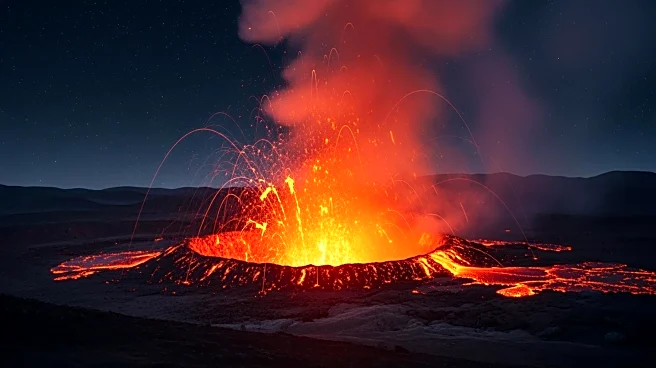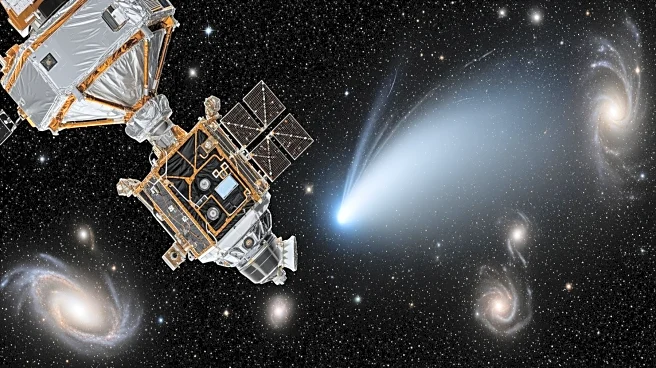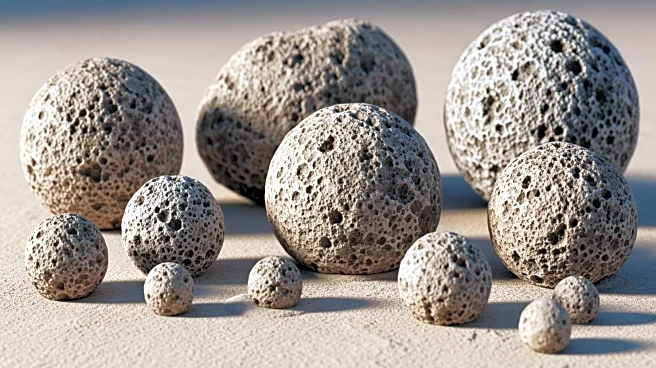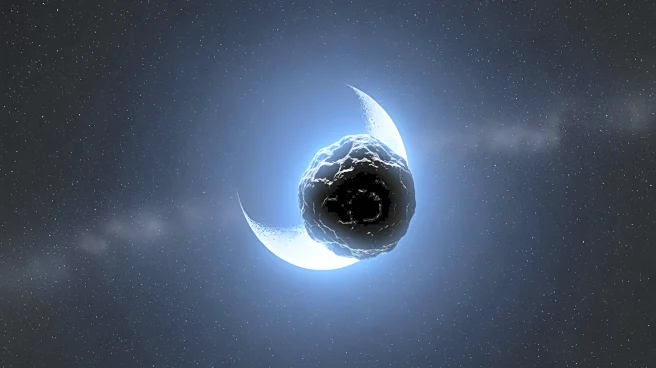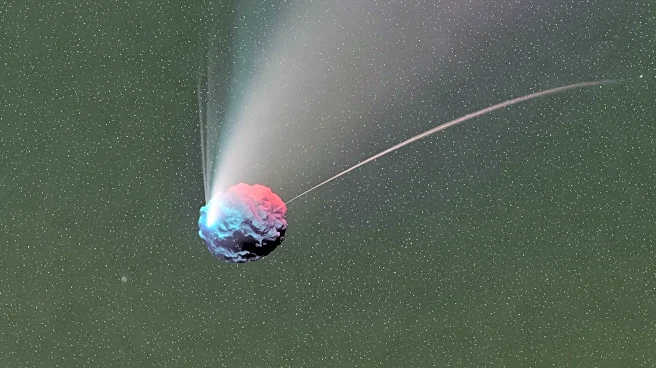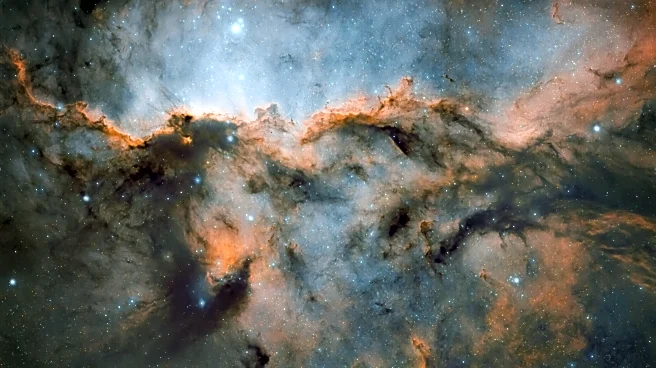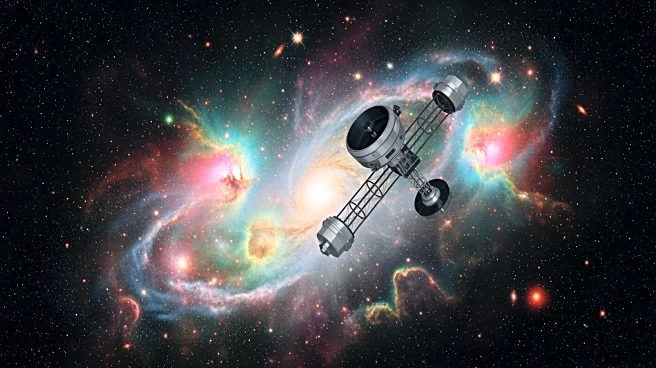What's Happening?
Recent data from NASA's Juno spacecraft has revealed that Jupiter's moon Io, the most volcanically active body in the solar system, is emitting significantly more heat than previously estimated. The findings
suggest that Io could be hundreds of times hotter than scientists thought, with about half of the heat coming from just 17 of its 266 known volcanic sources. This concentration of heat challenges the theory of a global magma ocean beneath Io's surface. Federico Tosi from the National Institute for Astrophysics explained that previous studies focused on a specific infrared band, which may have underestimated the heat emissions by neglecting cooler, extensive areas of Io's volcanoes.
Why It's Important?
Understanding Io's volcanic activity is crucial for comprehending the dynamics of the Jovian system and the processes that fuel intense volcanism. The discovery of higher heat emissions could reshape theories about Io's internal structure and the existence of a global magma ocean. This research highlights the importance of accurately interpreting spacecraft data to avoid misconceptions about celestial bodies. The findings could influence future missions and the design of instruments dedicated to studying Io, potentially leading to breakthroughs in planetary science.
What's Next?
While Juno's orbit will not allow for close observations of Io in the near future, upcoming missions like ESA's Juice and NASA's Europa Clipper will focus on other Jovian moons. However, monitoring Io remains essential, and the current findings provide a framework for interpreting remote observations. Future missions specifically targeting Io could offer direct insights into its volcanic processes, enhancing our understanding of the solar system's most intense volcanism.
Beyond the Headlines
The study of Io's heat emissions underscores the complexity of interpreting space data and the need for comprehensive analysis. The potential existence of a global magma ocean raises questions about the moon's geological history and its role in the Jovian system. The research also highlights the importance of collaboration between international space agencies in advancing planetary science.
